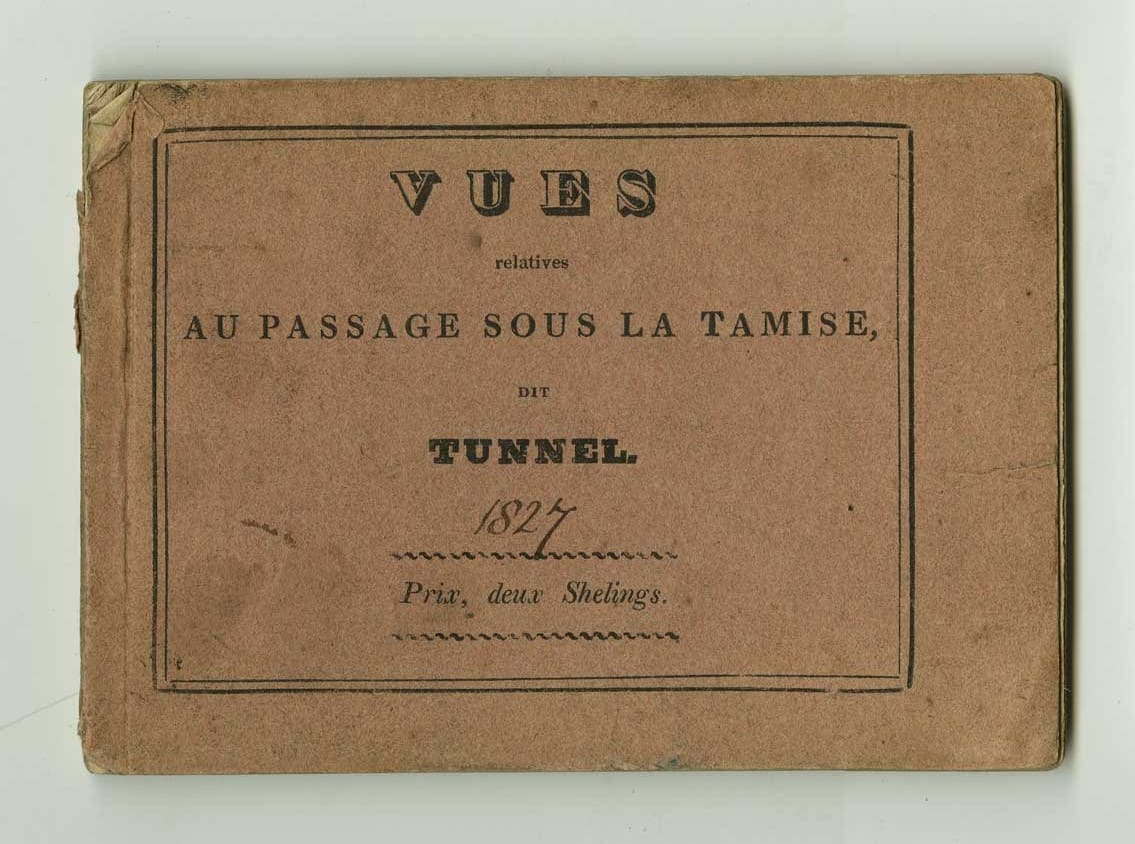- Published in 1827, this is a booklet of illustrations, plans and insights into the work involved in building the Thames Tunnel.
- The Thames Tunnel was designed by the engineer Marc Brunel and constructed between 1825 and 1843. When it was finished, it was the first tunnel successfully built under a navigable river.
- The whole booklet is written in French, the title in English reads “Views relating to the passage under the Thames”. It was probably written by Marc Brunel, who was born in Normandy in northern France.
- On the booklet’s flyleaf is the signature of one of Marc Brunel’s daughters, Lady Sophia Macnamara Hawes née Brunel (1802-1878).
The Story
Inside the Booklet
The booklet was made to a high standard, and priced at two shillings, suggesting that it might have been sold to raise money for the tunnel. Building the Thames Tunnel was a very expensive process, so items were produced and sold to help raise interest and to help fund it. The booklet is written in French, which at the time, was a widely spoken language among the wealthy upper class of British society. Marc Brunel may have chosen to write it in French to appeal to them in the hope they would be interested in investing money in the Thames Tunnel.
Inside the booklet are many detailed images of the construction of the Thames Tunnel. These include pull-out plans of the completed tunnel, charts illustrating the different layers of sediments through which the tunnel had to pass, and pages with cut-out sections that give an idea of processes involved in the engineering works.
Sophia’s signature on the booklet’s flyleaf shows that this booklet was her possession. There are no other inscriptions or handwritten notes (called marginalia) in the booklet; it has been well looked after and is in good condition. It is impossible to know whether it was a book she returned to regularly, or whether it simply sat on her bookshelves for many years.



